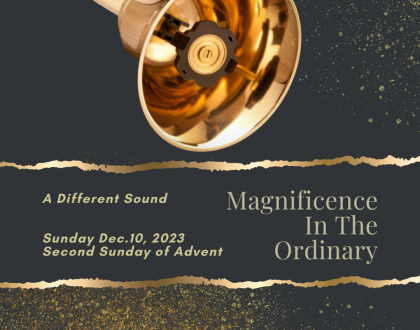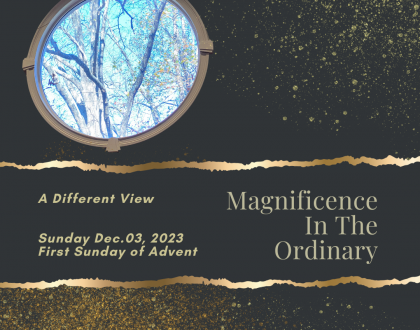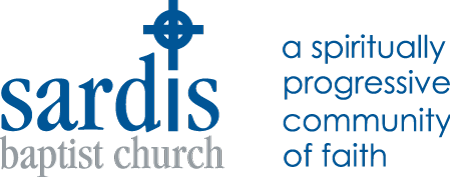Building Walls

Building Walls
Tillie Duncan
Eighth Sunday After Pentecost, Proper 10, 7/18/2021
Ephesians 2:11-22
Wait a minute, buddy! Don’t you see the signs? STOP! DO NOT ENTER. Herod’s Temple in first century CE Jerusalem posted warning signs at all the entrances –inscribed in the Greek language (no excuse for misunderstanding). “Let no foreigner enter within the parapet and the partition which surrounds the temple precincts. Anyone caught [violating] will be held accountable for his ensuing death.” Some of those stone artifacts still exist and can be seen in museums.
Herod’s temple was larger and grander than Solomon’s temple which had been destroyed in 587 BCE. Both had the shrine in which God dwelt – the Holy of Holies. So sacred that it was entered only once a year by the one priest so honored on that occasion. Down the steps was the court of the priests where the altar for daily sacrifices was located. Behind that, the court of Israel where all Jewish men could worship. And going outward, the court of women and then the court of Gentiles. Walls separated the various courts.
The physical walls were indicative of the invisible walls built up between peoples. To the Jews, the Gentiles were atheos; to the Romans and Greeks, the Jews were atheos, without God. Those who worshipped the gods of their culture were just as scornful toward people who refused to acknowledge their gods as the Jews were of them. And it was a hostile scorn! On both sides! The “other” was uncivilized, crude, ignorant. They were savages.
Walls have been built the world over to keep out “savages,” “barbarians.” The Great Wall of China was built piece-meal beginning six centuries before Jesus was born. Hadrean’s Wall built on the northern border of England kept those wild tribes to the north out of Rome’s British dominion. The border wall on our southern limits has had sporadic building since the early years of the 20th century to keep out unwanted immigrants, gang members and safety seekers alike.
The Berlin Wall, on the other hand, built in the aftermath of the Second World War, was raised to keep people in. Germany was cut in two as it was partitioned between 4 of the “winning” allied countries. And the city of Berlin, although within the Russian section, was partitioned as well. German citizens were separated from each other; family members, enmeshed in the division.
Though the German Wall came down in the late 1980’s, an interesting phenomenon has been observed. Red deer near the German-Czech border do not cross over the boundary that once held an electrified fence to restrict movement. It has been 30 years + since the fence was there; deer live about 15 years. Deer daddies and grandmamas evidently have taught that it is not safe to go beyond a certain space in that area. So the deer are still separated from each other. The German herd staying in Germany; the Czech herd remaining in the Czech Republic.
The culture in which we are steeped has a strong influence in the way that we live our lives. Perhaps you have heard of the Hatfield-McCoy feud which raged for about thirty years in the late 19th century along the Kentucky/West Virginia border. The families murdered each other, disconnected love connections. When brought to trial in their home counties, the accused were always acquitted because – well – it was members of their own family who had the legal and societal positions of power. Most of them never knew why they were at war with their neighbors: different side in the Civil war? A stolen pig?
The culture in which we are steeped has a strong influence in the way that we live our lives. Perhaps you have heard of white privilege. I know – that is a hard phrase to come to terms with. We don’t want to hear it. But STOP! White privilege is not the same as white supremacy, not the same as racism or prejudice. It is not about blame. It is not saying that white people don’t have challenges. It is just that challenges of white people have nothing to do with the color of their skin.
When I took part in a Meck-Min program, “The Souls of White Folks” several years ago, my reaction to white privilege was to push back. Me? Privileged? Ha! The farm I grew up on didn’t produce much money. When I went to Gardner-Webb, I didn’t even have 6 cents for the drink machine. My dresses and skirts were predominantly home-made or hand-me-downs from older cousins. The money I made working in the library went directly to the college to defray my costs.
And I didn’t consider myself prejudiced. Because of the racially segregated society in which I was reared, I had little contact with African-Americans. But what contact I experienced, my sympathies leaned toward my black/brown neighbors. At age 20 I argued with my grandma over racial issues and then cried all the way home because I had “talked back” to this well-loved woman, for whom I was named.
As a child, I hardly ever went to Shelby, but I do have a snapshot memory of seeing two drinking fountains in a department store labeled “white” and “colored.” And wondered why. But I was oblivious to the fact that African-Americans couldn’t eat in restaurants, use public bathrooms, sleep in motels. I didn’t know that there were laws that kept us all separated. I didn’t even have enough sense to question different schools. That’s just the way things were. Some electric fences had been installed years before, and I stayed in my own space.
True, laws are not the same as when I was a child, but skewed history and our belief systems have blinded us to realities. It helps us deny the damage that has been done to both African-Americans and white people. Sadly, churches have made it more difficult to come to terms with our embedded attitudes of Europe’s divine mandate to be the king of the hill. The white pictures of Jesus painted by European artists still hang in some churches. How many churches started private schools to keep white children separated from black children after Brown vs. Board of Education and the Civil Rights bill. According to Robert P. Jones in Too Long White, 2/3 of white Christians believe that killing African-Americans are isolated events; 1/3 of unaffiliated whites believe that. More white Christians are anti-immigration than white non-religious people. It is difficult to move across the boundaries even when the physical walls have been dismantled.
( Read Eph. 11-22)
“For [Christ Jesus] is our peace;…he has made both groups into one [group] and has broken down the dividing wall, that is, the hostility between us. “ We need the hope expressed in this verse as much now as the world ever has. Republicans/Democrats; whites/everyone else; immigration/anti-immigration; vaxxers/anti-vaxxers; pro gender equality/anti gender equality; fundamentalists/liberals; those who want to save the environment/those who want to exploit resources. We are divided on so many levels and have no desire to understand the stance of the other because they are so wrong, so ignorant, so indecent! Uncivilized!
Hostility evaporating? “Impossible!” We scoff. And yet in the early church people ate together who previously would have gone home and taken a shower to wash off the contamination of an unavoidable touching of the other. One of my “good-ol’-boy cousins recently took a job in Abu Dhabi; people from every area of the world attended the church he attended; it was an amazing sight to see all the difference that was harmoniously brought together under one roof. He was overwhelmed by the sight.
Do you remember when Charlotte was awarded the Panther’s franchise. I don’t recall if it were the first game they won or the first play-off game they won. But I was on Highway 49 on my way home. Listening to the radio, I heard that the Panthers had won. Horns started blowing; people were waving out their windows, shouting, smiling. We were all caught up in excitement. It didn’t matter which side of the road one was on; didn’t matter the make of the car; didn’t matter who was driving. A sports team had connected a diverse population. The direction of the energy was one way. The motorists on 49 were one because at that moment nothing else mattered.
So – here we are, Sardis: a church operational and functionable—finished, but not finished. The building we inhabit is an asset and a responsibility, but NOT the church. Our foundation was laid some 30 years ago consisting of people like Doug Aldritch, Jim Owen, and Linda Cook. The hundreds of people whose lives have interconnected with this congregation are the bricks. Even though some people have died or moved away, that brick is still a part of the structure because they were mortared in. At the same time the structure is flexible enough to add other bricks. Odd-shaped bricks and broken bricks; sun-baked bricks and kiln bricks; clay bricks and mud bricks. It may be that even the architectural design changes as the years pass. We are held together by the keystone, Christ. As we keep growing into a holy place for God to dwell, we can find hope in the message of a piece of word art I have: “Please be patient; God isn’t finished with me yet.”
(May it be so, whether sooner or later!)
Recent Sermons

A Different Sound
December 14, 2023

A Different View
December 04, 2023
Who Will Be Your Angel? Whose Angel Will You Be?
November 14, 2023


